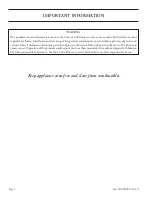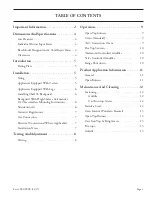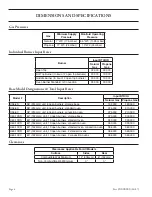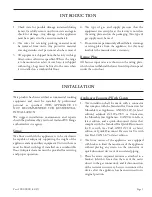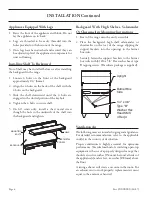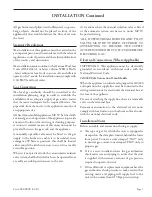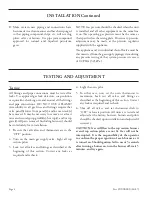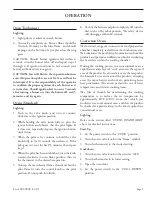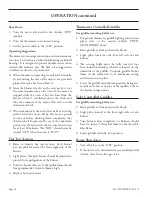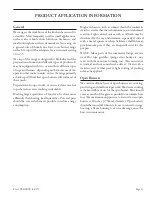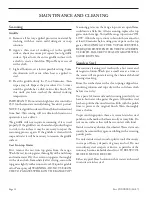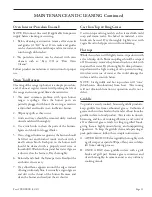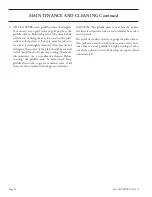
Part # XXXXXXX (02/07)
Page
PRODUCT APPLICATION INFORMATION
General
The range is the workhorse of the kitchen because of its
versatility. Most frequently used in small applications,
such as cafes, schools, church kitchens, firehouses, and
small nursing homes where demands are less taxing. As
a general rule of thumb, one four to six burner range
with a hot top will be adequate for a restaurant seating
30 to 35.
The top of the range is designed for flexibility and the
preparation of numerous different types of products. It
may be equipped with two, or even three different types
of tops and burners, depending on the menu needs. An
operation that cooks to order, or uses the range primarily
as back-up will find that open burners will suit most of
their needs.
Preparation of soups, stocks, or sauces is done on a hot
top where slow, even cooking in desirable.
Heating larger quantities of food can be done more
efficiently than heating small quantities. Pots and pans
should be covered whenever possible to reduce energy
consumption.
High acid sauces, such as tomato should be cooked in
stainless steel rather than aluminum to avoid chemical
reaction. Light colored sauces such as Alfredo may be
discolored by the use of aluminum, especially if stirred
with a metal spoon or whip. Saltwater shellfish may
pit aluminum pots if they are frequently used for this
purpose.
NOTE: Many parts of the commercial range are raw
steel. Hot tops, griddles, springs, door hooks etc., can
react with the moisture forming rust. This occurrence
is normal and not considered a defect. Clean with a
stainless steel or fiber pad. A light coating of cooking
oil may be applied.
Open Burners
The mist traditional uses of open burners are sautéing,
pan frying, and small stock pot work. Short-term cooking
is the most efficient use for the open burner. Pans should
cover as much of the grate as possible to minimize heat
loss. The maximum stop pot size to be used on an open
burner is 11 inches, (279mm), diameter. Open burners
should be turned off when not in use to conserve energy.
Leaving a flame burning is of no advantage since the
heat is instantaneous.
Summary of Contents for U36-6S
Page 15: ...Part XXXXXXX 02 07 Page 15 NOTES...
Page 16: ......


